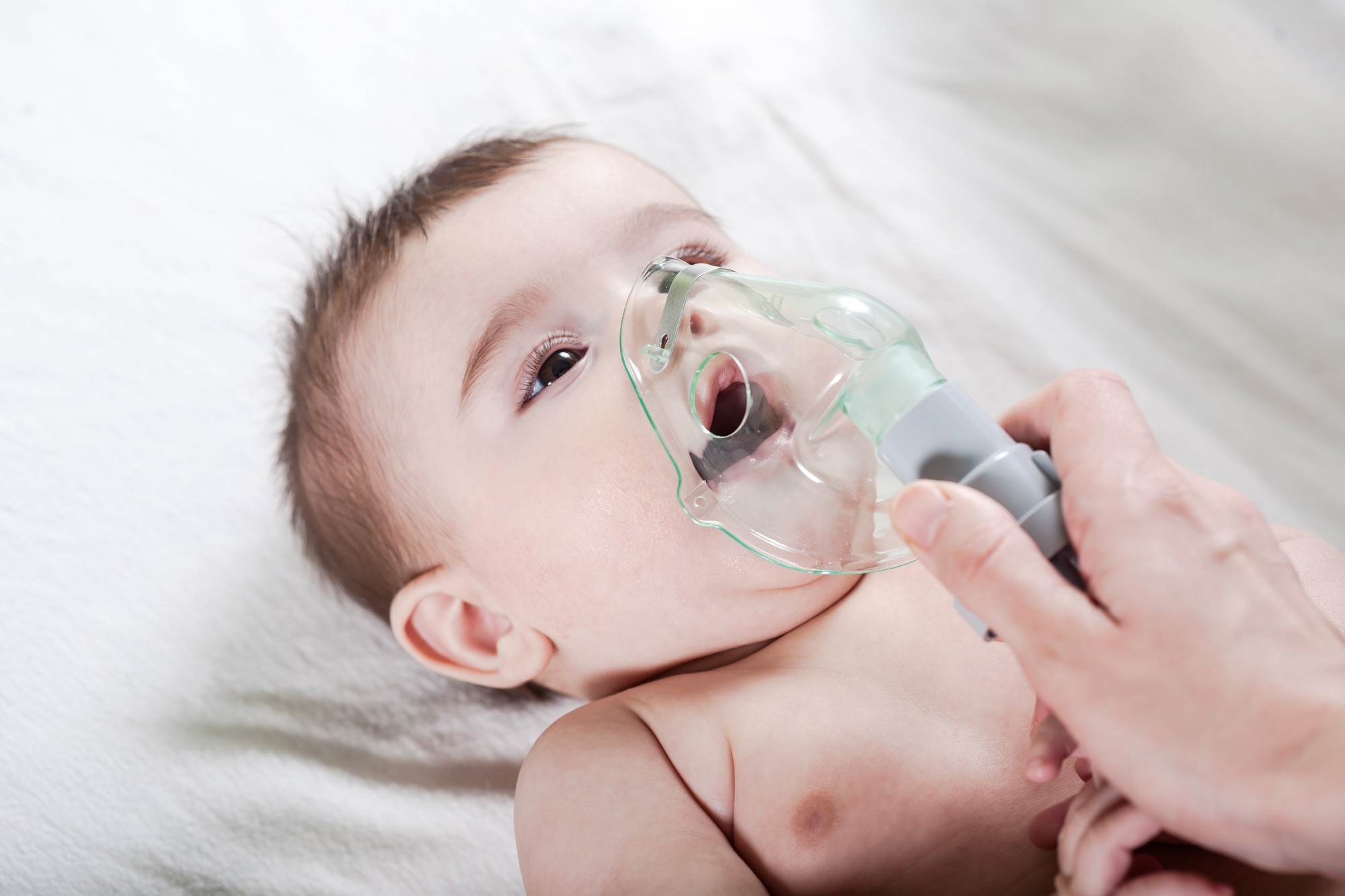In a recent study published in The Lancet, researchers explore the correlation between respiratory syncytial virus (RSV) infection in infancy and the development of asthma in childhood.
Study: Respiratory syncytial virus infection during infancy and asthma during childhood in the USA (INSPIRE): A population-based, prospective birth cohort study. Image Credit: Alexander Ishchenko / Shutterstock.com
What is RSV?
RSV is a common respiratory virus that is seasonal and causes significant illness and death among infants globally. RSV bronchiolitis has been consistently associated with childhood asthma in observational studies.
Previous studies have also indicated that the correlation between childhood asthma and RSV bronchiolitis may be influenced by the common genetic predisposition for severe RSV infection in early life and wheezing phenotypes in children. Determining whether preventing RSV infection in infancy can reduce the risk of childhood asthma is crucial for developing effective primary prevention methods, reducing respiratory morbidity in children, and establishing healthcare policies.
About the study
The Infant Susceptibility to Pulmonary Infections and Asthma Following RSV Exposure (INSPIRE) study is a population-based birth cohort that aims to test the hypothesis that RSV infection during infancy increases the likelihood of childhood asthma. Children who met the eligibility criteria were enrolled within the first four months of their birth.
The recruitment process was performed in 11 pediatric practices located in middle Tennessee. The inclusion criteria for the study were healthy children without significant cardiovascular, pulmonary, or neurological illnesses, born at term with a birthweight of 2,250 g or more, and born between June and December 2012 or June and December 2013.
For children who met specific criteria for acute respiratory infection, the team conducted an in-person assessment that included a parental questionnaire, physical examination, nasal wash collection, and structured medical chart review in individuals who had received healthcare. RSV was detected molecularly using reverse transcription-quantitative polymerase chain reaction (RT-qPCR). Blood samples were obtained from all children at the age of one year, and RSV serum antibody titers were measured using enzyme-linked immunosorbent assay (ELISA).
In the initial year of life, children were categorized as either RSV-negative or RSV-positive. The Respiratory Severity Score (RSS) was utilized to evaluate the severity of RSV infection in infants who underwent an in-person respiratory illness assessment.
The study’s primary outcome involved five-year current asthma, which was determined by a parental diagnosis of physician-diagnosed asthma or the usage of asthma medicine before the age of five years, as well as any of the following symptoms within the 12 months prior to the five-year visit, including asthma symptoms, use of acute health-care for asthma, or using asthma-related systemic steroids. Secondary outcomes comprised recurrent wheezing and the five-year current asthma inflammatory subtype.
Study findings
Of the total enrollment of 1,952 children in INSPIRE, 1,946 met the eligibility criteria, 1,220 of whom underwent in-person respiratory illness examination, and 1,709 provided a blood sample at the age of one year. Among the 1,946 children enrolled, 2,093 in-person assessments were conducted to evaluate respiratory illness.
Children who completed their five-year visit exhibited higher birth weight, increased likelihood of having private insurance, breastfeeding during infancy, attendance at daycare during infancy, and reduced exposure to second-hand smoke during early infancy or in utero compared to those who did not fulfill their five-year visit.
Out of the 1,220 children who underwent a respiratory illness assessment in-person, 361 tested positive for RSV through RT-qPCR in a minimum of one nasal wash. The peak rate of RSV-positive nasal washes, as determined by RT-qPCR tests, was noted in January of the 2012 to 2013 RSV season and in December of the 2013 to 2014 RSV season. Of the 1,220 children assessed for respiratory illness, the median age for initial RSV infection was 20.29 weeks, while the median RSS was three.
The prevalence of RSV infection in infancy was 944 out of 1,741 children. Out of 944 infants with RSV infection, 47 tested positive through nasal wash using RT-qPCR exclusively, 583 tested positive for RSV serology at the age of one year exclusively, and 314 tested positive for both. Non-RSV-infected infants were more likely to be born vaginally, recruited at a younger age, and non-Hispanic White in comparison to their RSV-infected counterparts.
Out of the 1,309 children with follow-up data, 238 had five-year current asthma. Children who did not have RSV infection during infancy had a lower prevalence of five-year current asthma as compared to those who did have RSV infection during infancy.
Non-RSV-infected children during infancy exhibited a 26% reduced likelihood of five-year current asthma as compared to their RSV-infected counterparts. RSV infection during infancy could prevent 15% of five-year current asthma.
Children without RSV infection during infancy had a lower proportion of recurrent wheezing as compared to those with RSV infection at each measured time point from ages one to four years. The relationship between RSV infection during infancy and recurrent wheezing in preschool children showed temporal variability in repeated outcome analyses.
Infants without RSV infection exhibited a lower annual risk of recurrent wheezing as compared to those with RSV infection, according to age-stratified models. However, statistical significance was observed only for one- and two-year recurrent wheeze.
Conclusions
The absence of RSV infection in the first year of life is linked to a significant decrease in the likelihood of developing childhood asthma. This correlation is influenced by age and severity.
The study findings also indicate the need to investigate interventions that can prevent, delay, or mitigate the severity of the first RSV infection as a potential strategy to lower the prevalence of childhood asthma in the population.
The current study also emphasizes the need to extend the monitoring of prevalent respiratory outcomes in children enrolled in current and forthcoming clinical trials investigating therapies for RSV immunoprophylaxis.
Journal reference:
- Rosas-Salazar, C., Chirkova, T., Gebretsadik, T., et al. (2023). Respiratory syncytial virus infection during infancy and asthma during childhood in the USA (INSPIRE): A population-based, prospective birth cohort study. The Lancet 401(10389); 1669-1680. https://doi.org/10.1016/S0140-6736(23)00811-5
